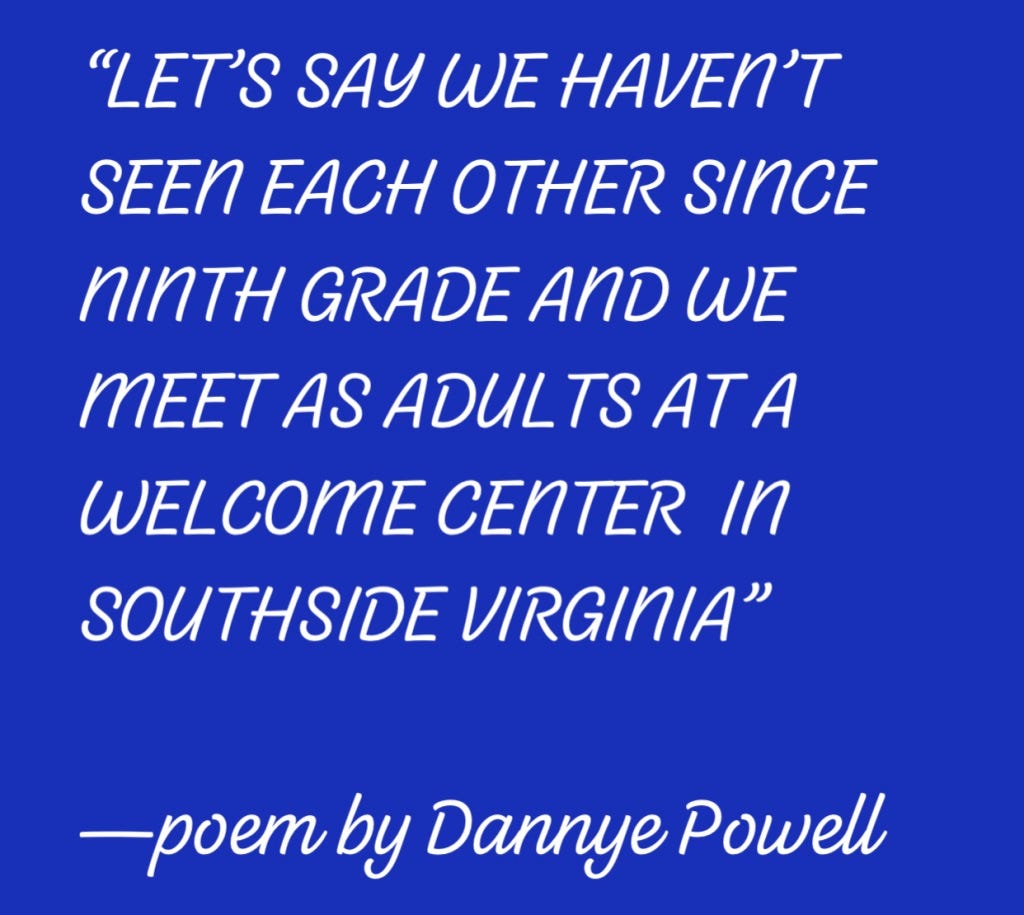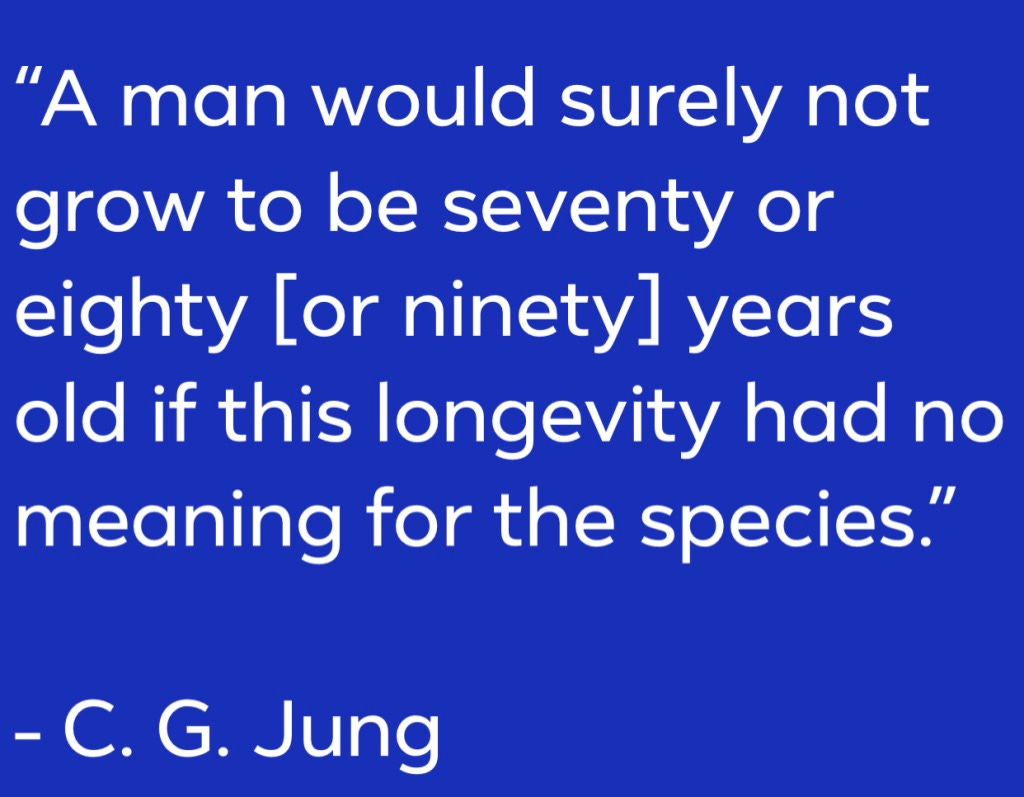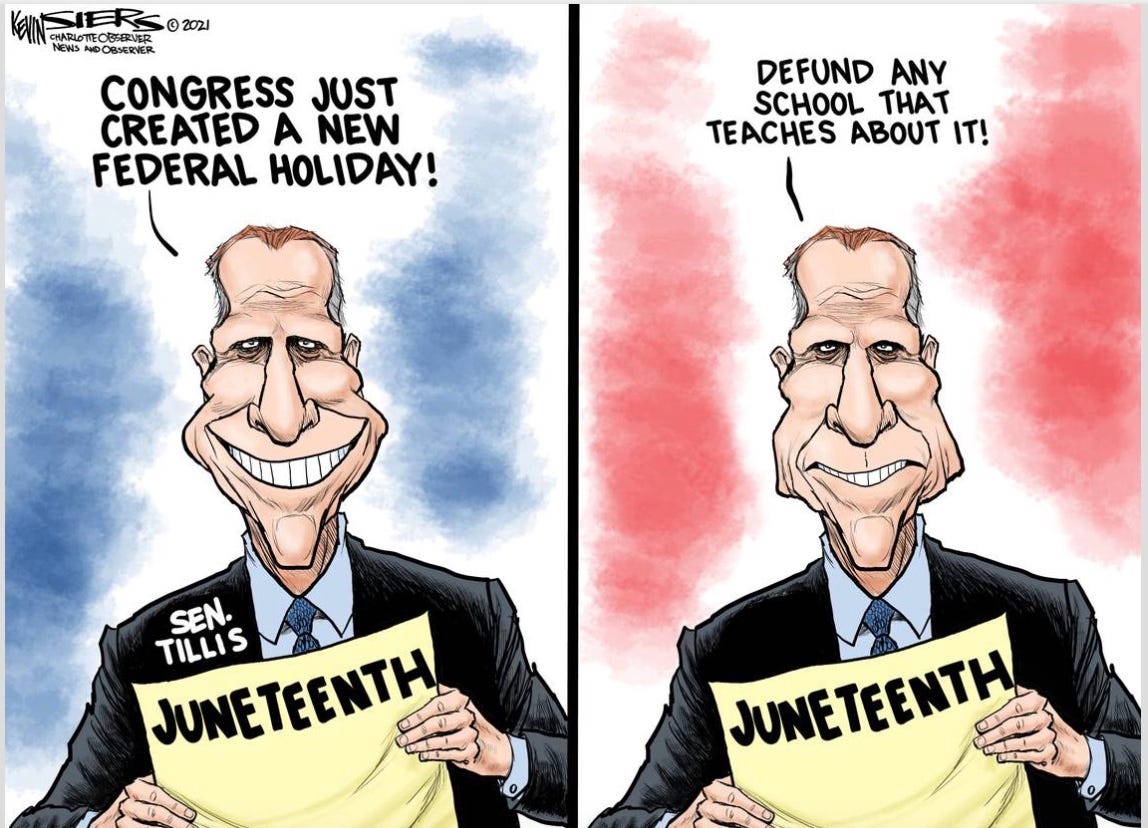Friday greetings and happy summer!
Since we left off last week with the brand-new Juneteenth National Independence Day and the joy of its arrival amid shadow aspects of our racial climate, here’s news that Nikole Hannah-Jones will not take the UNC job without tenure (Story from the Raleigh News and Observer.) Other news updates are under news-scape below.
With several examples from today’s news, newShrink continues with the theme of shadow, adding the perspective of its part in what we mean by psychological maturity.
adulting in the public eye
What is this, what are some of the markers and how does it show up as we look at news events and the people in them?
This is a search for true grownups (and maybe even one in ourselves.)
Over time in newShrink I aim to make a case for the existence (and desirability) of true, conscious, creatively alive adulthood in today’s America that, contrary to common assumptions, does NOT look or feel one-dimensional like this:
… but more like this:
It’s intrigued me that over millennia the idea of middle-age as around age 35 has not changed from the Judeo-Christian Old Testament prophet Isaiah, through Dante Alighieri in the 14th Century, to today. Yet the life-spans to 70, 80, 90 today have doubled from when those “middle-aged” people were just a couple of years from their own likely demise.
Which brings me to C. G. Jung’s extensive study and clinical-patient work with stages of life in the soul or psyche’s structure and dynamics. The question inherent in this favorite quote keeps me curious about life stage and this idea of purpose through psychological maturity:
Throughout his work Jung develops and expands his belief that this purpose or “meaning for the species” lies in a deeply energetic and creative ongoing process called individuation that unites more and more of our original unconscious (“capital S”/soul’s code) Self with our conscious (“lower-case s”/ego) self.
Jung called individuation “the striving of the unconscious for light and the conscious for substance.”
Great energy is required and consumed the more our unconscious “stuff” is getting “stuffed down.” Conversely, enormous life-force and creativity are released as more and more is instead “allowed-up/in.” That energy becomes the sweet-spot of this “generative” time, beyond resume-building and propagating of the species, in what James Hollis calls second-adulthood.
Given how many leaders and key figures in public life have reached advanced chronological age—yet with very different effectiveness, behavior patterns and personality—it seems increasingly important to have a standard for making meaningful distinctions, besides age, among them. The same applies to the many chronologically young, yet obviously psychologically mature.
tracking tools
If we’re looking for grown-ups, these soul-engaged psychological adults, how do we recognize them? Here’s a summary start on four markers I look for—especially the first because it has so many physical indicators. Future newShrinks will revisit, develop and apply these.
affect: demonstrated emotion and emotional tone. There’s expressing and moving through a wide range of emotions, especially dealing with emotional intensity. There’s physical ease of movement and body language, full range of joy, energy, fun… often right on the heels, even in the same conversation with tears, anger, compassion, concern, embarrassment, problem-solving. While reactivity happens to all of us, with the psychologically mature it’s brief and the self-regulation is adept.
initiation(s). There’s been at least one completed shadow-confronting “crucible” experience, made clear through what the person has said and done with it and the ease with which that has happened going forward.
individuation. As described, there’s clearly an ongoing process of bringing together both an inner life and external one that are engaged with one another. Again, this is demonstrated in what is said, in life choices and story. (When stuff is fully integrated rather than pushed-down, it just shows up naturally in speech and deed.)
And finally, a specific part of the individuation process,
what Jung termed the “transcendent function” of holding the tension of opposites. Individually the tension of holding oppositions, and ultimate energetic push to “transcend” the opposites in order to become more whole, is between our conscious “outside-in” and unconscious “inside out” selves. We usually learn to notice and pay more attention to the unconscious stuff after it clobbers us as something we were unaware of, “from nowhere.” James Hollis calls this the “wonderfully terrible portal to a new life—or at least the next stage of the journey.” At the time it gets described more like an abyss (or dying.)
For the news-tracking front, that fourth and likely least-familiar one is a complicated-sounding phrase for what happens when we “hold the tension of opposites” until a new and overarching “third thing” is created out of the energy of that tension. In everyday, external life—and the news— we can see this all the time. At least when things are working as designed, it’s the dynamic tension inherent in the back-and-forth of adversarial court deliberations and legal process; partisan governance in Congress, legislatures and city halls; and elections, for example.
As mentioned previously, to understand and apply ideas such as shadow in practical ways doesn’t require being particularly esoteric, fond of psychological jargon or “Jungian/post-Jungian” at all. But basic definitions can help.
Once again, to streamline the main News Notebook email I’m adding an active link button to today’s Library on the website for definitions, references and other longer details. (You can find similar previous Library posts in the Archive for reference here by clicking here, on the logo-couch at the top of this post, or anytime directly from your browser at https://newshrink.substack.com.)
adulting in news stories
President Joe Biden’s demonstrated experience with shadow-wrestling, humbling initiations and individuation, all examples of psychological and moral adulthood, are the focus of study in a future Sunday Shrink-wrap piece.
Meanwhile, another dimension of his level of psychological and moral maturity shows up with news of escalating efforts by conservative Catholic Bishops to rebuke and limit Biden’s receiving holy communion because of his political position regarding abortion, which has evolved.
Here are examples of Biden’s different maturity-markers, the capacity to hold and navigate paradox (from The New York Times) and the transcendent function. Biden demonstrates the capacity to hold the intense tension of opposition/conflict between what by all accounts are Biden’s deepest motivators, faith and political leadership. For him it’s the paradoxical challenge of being a faithful Catholic and also fully representing all of us as he was elected to do. That includes those faithful who sincerely believe in abortion as well as those he leads who identify with no religion at all. Biden’s actions and governance represent allowing that “transcendent third” to emerge.
Other related news coverage:
Biden’s possible rebuke, church and state issue, from PBS
Bishops targeting Biden (from The New York Times)
“Bishops forget lessons of JFK” (Karen Tumulty of The Washington Post)
“A Dramatic Show of Force by Conservative Bishops,” from the New York Times
A second example of evolving psychological maturity in a public figure points to initiatory crisis, the necessary tension of the opposites and transcendent function involved in that, and the apparent path of individuation toward wholeness that is under way.
This update with Virginia governor Ralph Northam (New York Times) is a study in personal growth and redemption in wake of a very public “initiation through the crucible” of a blackface racial scandal. Northam’s humbling process, reckoning with his own shadow, communicating about it and taking significant action here are prime examples of soul-nourishing shadow work and individuation. (I hope to look at his process and life-story more closely in a future Sunday Shrink-wrap.)
A third example for tracking psychological maturity, whom I will save for another week for time and space considerations, is Congresswoman Liz Cheney. (New York Times.)
As this late musical sage summarized:
🦋💙
news-scape
For many the new Juneteenth holiday was a day of joy shadowed by bittersweet irony.
Here’s one take from The Washington Post.
And another, “Juneteenth Emancipation Day: let’s celebrate anyway”
This piece on Wilmington’s Lie by David Zucchino, and his 2021 general nonfiction Pulitzer Prize-winning book about the 1898 racial massacre by whites in Wilmington, NC, is a good one to read through lenses of race and shadow. The monumental historic story had hidden in plain sight, like much of the Jim Crow era.
A longtime newsroom colleague of Zucchino reports: A Pulitzer star that was pretty bright from the start (from The Charlotte Observer.)
This work is another reminder that some context, a shadow-awareness, is in order even as we celebrate the Congressional passage — by an unusually unanimous Senate and enormous majority vote of the House — of a bill to make Juneteenth a national holiday.
And on that cautionary note: NC shouldn’t legislate away our discomfort with racism (from The Charlotte Observer.)
Charlotte Observer cartoonist Kevin Siers captures contradiction inherent in the new Juneteenth National Independence Day holiday in light of other Congressional and state legislative actions. Our junior NC Senator demonstrates how not to manage the paradoxical tensions of opposites inherent in governing.
Which seems a natural example for today’s focus on psychological maturity, and its lack, in newsmakers.
postcards from the field
I close today with a poem someone shared on Facebook just after my post here last week on Southern Baptists in the news (and in my teenage angst.) It’s by the gifted Dannye Powell, a long-ago newspaper colleague and friend.

The so-familiar song lyrics embedded in the poem grabbed me with one saving grace (besides discovering Jung) in those suburban-Baptist teen years. There were all of those retreat-trips on church buses full of song… and boys!
In this summer of post-COVID re-openings and pent-up passion for prospective reunions, the poem points us also to that sweetest of Welcome Centers: memory.
This one needs to be taken whole!
And, that is all I have! Talk to you next Friday.
🦋💙tish
… it is important that awake people be awake,
or a breaking line may discourage them back to sleep;
the signals we give — yes or no, or maybe —
should be clear: the darkness around us is deep.
— William Stafford, “A Ritual to Read to Each Other”









